2010 Civil War Travelogue
Welcome to my 2010 travelogue page. It is in five parts. Go to 2010 Travelogue, Part 2, Part 3, Part 4, Part 5.
| Here is a reminder about the reason I write these pages the way I do. They record my experiences and impressions of Civil War trips primarily for my future use. Thus, they sometimes make assumptions about things I already know and focus on insights that I receive. They are not general-purpose descriptions for people unfamiliar with the Civil War, although I do link to various Wikipedia articles throughout. Apologies about the quality of interior photographs—I don't take fancy cameras with big flashes to these events. If you would like to be notified of new travelogues, connect to me via Facebook. |
Here are my 2010 trips:
- Trip to Atlanta for the ING Georgia Marathon, but with some battlefield visits in the area, March 18-22.
- NPS Gettysburg Seminar, April 10-11
- CWPT Annual Conference, Lexington, KY, June 3-6
- Association of Licensed Battlefield Guides annual seminar, Gettysburg, PA, September 10-12
- Mosby Heritage Area seminar on Fredericksburg, October 1-3
- Last Stand in the Carolinas, CWEA, October 7-9
- Trip to DC and Virginia in conjunction with the Marine Corps Marathon on October 31. There was a BGES seminar in Washington on October 30. The first week of November I visited Winchester, Cedar Creek, Brandy Station, Cedar Mountain, the Wilderness, and various museums, and I attended a CWPT Advance Guard weekend in Richmond with Gordon Rhea and others.
- West Coast Civil War Round Table Conference, San Francisco, November 12-14.
- Trip to Charleston, November 18-22, for a staff ride on the Siege of Charleston with the U.S. Army Command and General Staff College.
Atlanta, March 18-22
Here's my report on my visit to Atlanta for the ING Georgia Marathon. It's split into two parts—this one is about the Civil War visits before the race, the other part about the race itself. One caveat: I usually include a lot of links to Wikipedia articles in these reports. For this campaign, I have not done very much work on the articles themselves, so some are currently pretty skimpy. I intend to correct that now that I'm coasting in retirement.
Thursday, March 18
My wife Nancy and I arrived rather late last night and checked into the Embassy Suites downtown, a venue selected by the Team in Training folks for its convenience to the marathon start/finish lines. We headed north on I-75, marveling at the gridlock of traffic parked on the 6 lanes of I-75 on the way into the city. We did not have the time to do the entire Atlanta Campaign, because it's almost 100 miles to Rocky Face Ridge at Dalton, so I did some compromising. We started with Allatoona Pass, which saw action (October 5, 1864) in the Franklin-Nashville Campaign, but Joseph E. Johnston actually had troops here in June, before he shifted them southeast toward New Hope Church. This is a rather well preserved little battlefield. We walked through the dramatic railroad cut, so deep that I wondered why they didn't build a tunnel, and climbed to visit the remains of the Star Fort. The earthworks have survived well. At this point Nancy lost interest and returned to the car, but I climbed the other side to see more Federal entrenchments and the site of the Crow's Nest, where a Signal Corps station was perched at the top of a 60-foor tree!
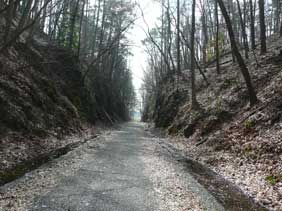 |
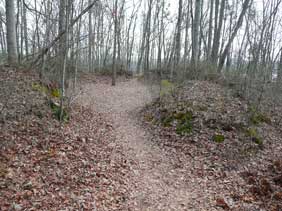 |
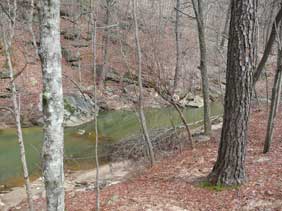 |
Allatoona Pass |
Star Fort |
Site of Pickett's Mill |
Next was Pickett's Mill, which claims to be the best preserved battlefield of the war, although I have visited others—Ball's Bluff, North Anna River, among others—that seemed comparable. This is one where the terrain really has to be seen to understand the battle. The ravine that figures prominently in the action is dramatically deep and I guessed that the Confederate defenders had a pretty easy time of it by the time the Federals could wheeze up that slope through pretty heavy foliage. (Sorry to say that it's very difficult to take meaningful photos of wooded terrain like this.) The Visitor Center had a brief video about the battle and I was amused at the implicit rivalry between battlefields. This is a state park (Warning: open only Thu/Fri/Sat) and they were obviously tweaking their US rivals over at Kennesaw Mountain. They made it seem as if Pickett's Mill was the climactic battle of the campaign, closing up the video with (paraphrasing) "Further fighting occurred at Kennesaw Mountain and Smyrna, and then with the Battle of Jonesboro, Atlanta surrendered." I took one of the three marked trails, which covered positions for both sides, but I got halfway through before the path ended at a washed-out bridge. I phoned back to the visitor center to get directions from there, but the volunteer guy admitted there was no ranger on duty and he hadn't walked the trails in a few weeks, and not since a big storm came through. So I had to backtrack the way I came.
Despite the preening at the state park, the biggest battle before Sherman approached Atlanta was Kennesaw Mountain, and that was our next stop. The Feds have a really nice visitor center and museum, which essentially has to cover the entire campaign, and does a good job of it. We drove and then hiked up to the summit of [Big] Kennesaw Mountain and enjoyed the really panoramic view for miles and miles. I could see Pine Mountain in the distance—the place Leonidas Polk was hit by a cannonball—but was rather underwhelmed at its modest size, more like a hill than a mountain. There are some of the earthworks still at the northern end of the ridge and some Napoleons placed to show how the guns could dominate the railroad. At the southern end of the ridge, after a saddle and then Little Kennesaw, is Pigeon Hill, which requires a very strenuous climb to reach more earthworks. The park is not contiguous, so the driving tour of four stops makes a number of detours outside the park. The third stop is Cheatham Hill, where the major action occurred at the "Dead Angle." Once again I could see the advantage of terrain for the defenders—the Federals had to cross an open field up a slope and strike fortified troops. (The slopes at the previous two stops were stupendous, but those were not the main attacks of the day.) The final stop is Kolb's Farm, where a few days earlier John Bell Hood attacked the Federals and didn't do well. I have to say that this was a completely uninteresting stop because there's almost nothing to see except a restored house. The surrounding area of the mountain is dominated by very expensive homes—mansions, some of them.
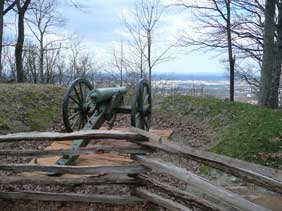 |
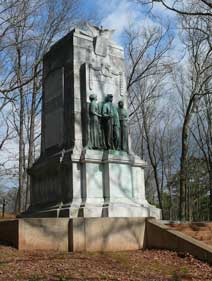 |
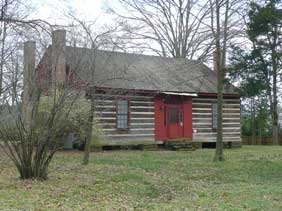 |
View from Kennesaw Mountain |
Illinois Monument at the Dead Angle |
Kolb's Farm |
We finished up the day with dinner at the Woodfire Grill in Buckhead. The executive chef, Kevin Gillespie, was one of our favorite contestants on Bravo TV's Top Chef show. Dinner was delicious and we left with our clothing smelling of wood smoke! A bit pricey, but a very good value. Recommended.
Friday
A light CW day because I had race prep to deal with. So I was able to schedule only two CW visits. First, I left Nancy at the Atlanta Zoo in Grant Park and walked next door to the Cyclorama. I was very impressed with this. I haven't seen the newly restored Gettysburg Cyclorama yet—next month!—but this one is larger and I'm quite sure Atlanta's will turn out to be (artistically) better. They make masterful use of three-dimensional figures and terrain in the foreground and it's difficult to tell where the 3D stops and the painting starts. Disney folks supposedly helped them add the 3D figures, which weren't in the original design. The audience bleacher seating rotates to see the whole panorama and spotlights highlight points mentioned in the narration. The only negative thing I can say is that they really make no attempt to explain the Battle of Atlanta in any detail, relying mostly on little vignettes. They start looking northwest, toward the city, so they have to describe Cheatham's assault first, even though it happened more than halfway through the battle. And they treat Bald Hill as an afterthought. The amusing part is where they highlight Old Abe, the mascot eagle of the 8th Wisconsin Infantry, soaring over the battle. That regiment wasn't in this battle, but the painting was done by a panorama company in Milwaukee, which patriotically put Old Abe into every one of its paintings, relevant or not.
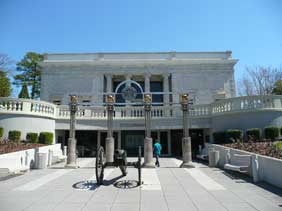 |
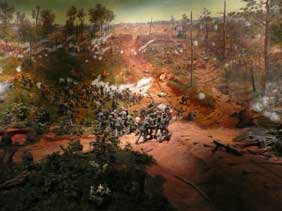 |
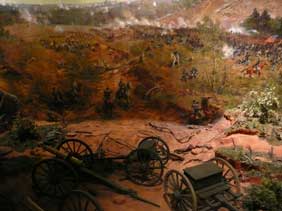 |
Cyclorama building |
Views of the Cyclorama, ... |
showing the 3D artifacts blended in |
About a mile away is the pleasant Oakland Cemetery. I was able to find the graves of John B. Gordon, Clement A. Evans, and Alfred Iverson, Jr. The latter had a lengthy biography chiseled into his slab, which conveniently managed to forget about his role in the Battle of Gettysburg!
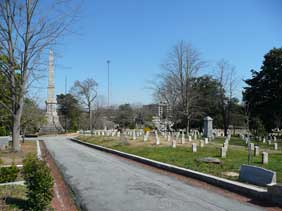 |
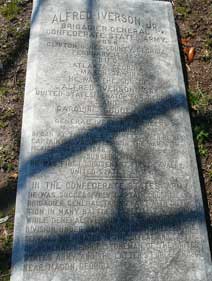 |
Confederate section at Oakland Cemetery |
Iverson's life |
Dinner at Max's, home of Atlanta's only coal-fired pizza oven. Excellent NY-style thin pizza.
Saturday
Today was devoted primarily to driving the marathon route as a preview for tomorrow's race. It goes through some lovely areas of the city, but it has a distressingly low amount of flat stretches! Up and down like a washboard, although none of the hills are very steep—the organizers selected a really convoluted course to avoid severe hills. About the only CW connections with the route are that it goes through Little Five Points, which was at the northern end of the Battle of Atlanta (at just about the viewpoint shown by the Cyclorama), where Cheatham's assault hit. Also, it loops through downtown Decatur, where Wheeler's cavalry attempted to destroy McPherson's supply trains.
Along the route we took a slight detour to visit Rhodes Hall on Peachtree St., which is a 1904 mansion owned by a furniture entrepreneur named Amos Rhodes. My interest was in a series of painted windows with portraits of CW characters and some scenes, such as Fort Sumter (although they depict the fort under Confederate control, a rather odd treatment). I found it unusual that the artist showed James Longstreet in his old age with long gray whiskers, long after the war, but most of the other generals seemed to be at their 1860s appearances. The tour guides expressed disbelief that anyone, like Rhodes, from Kentucky would be interested in the war because, as a border state, they weren't involved. My jaw dropped at that. Nancy found the rest of the mansion tour pretty interesting.
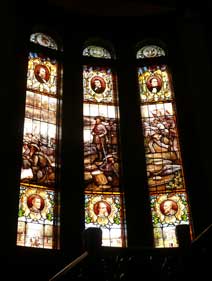 |
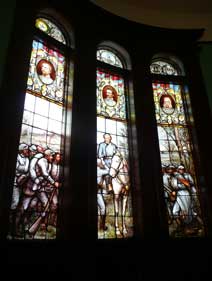 |
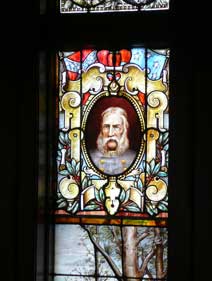 |
Some of the painted windows... |
at Rhodes Hall |
Longstreet |
After the marathon drive, I left Nancy at the hotel and took one more drink at the historical trough. I drove to the site of W.H.T. Walker's death, which is a modest monument next to a gas station. A local lady offered to "watch my car" while I went across the street for the photo, so I made a modest contribution to Atlanta's begging community, which is something I almost never do at home. She expressed surprise that there was a war here, but I assume that was a little joke on her part. About a mile away, James B. McPherson's death is remembered with a similar monument—a cannon barrel pointing upward—in the middle of an intersection in a nice housing development. I passed over the site of Bald (Leggett) Hill, which was bulldozed to be the I-20 interchange at Moreland Ave, and followed the Union line north, but there's literally no trace of the Battle of Atlanta left. (Some of the roads are still there with the historic names, but that's about it.)
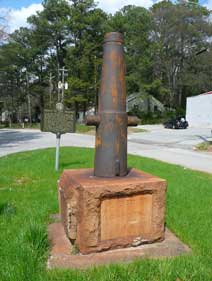 |
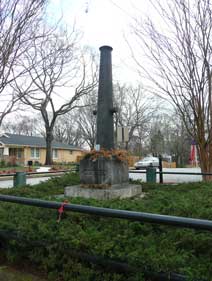 |
W.H.T. Walker death marker |
James B. McPherson death marker |
Tonight is the kickoff dinner for the marathon, so I'll pass you over to my running page for a description of the race.
NPS Gettysburg Seminar, April 10-11
I attended the National Park Service seminar at Gettysburg. A similar seminar is given every other year and concentrates on one time-oriented aspect of the battle. The first one I attended was about the actions on July 1, followed two years later by July 2, and so on. This year the topic was "The Aftermath and the End of the Campaign." This was my eleventh visit to Gettysburg since 2003!
I flew out to Dulles on Thursday to spend a day on the battlefield on my own before the seminar started on Saturday morning. Since the seminar lectures were in the Gettysburg Hotel on the main town square, I booked a room there, even though it is not one of my favorite hotels. (By the way, the reason I did not post this text during the course of the seminar, as I usually do, is that the hotel blocked FTP traffic through their firewall, so I could not update my website. And what's up with AT&T not providing 3G data service in Gettysburg? Do they think this is 1863, or what?)
Friday, April 9
I got up relatively early for a new activity—running on the battlefield! On previous trips I never seemed to have enough time available, but this time it worked out fine. I am still partially in recovery from the Atlanta Marathon a few weeks ago, so I did not schedule a really lengthy run. I ran from the hotel down Middle Street, turned left on West Confederate Avenue, passed by all of the Confederate memorials on Seminary Ridge, continued on South Confederate Avenue to Sykes Avenue, experienced some significant hills around Big Round Top and Little Round Top, then up the Union line past the Pennsylvania Memorial, the Angle, the old (eyesore) Cyclorama building, the site of the old visitor center, the National Cemetery, and back to the hotel up Baltimore Street, altogether about 8.1 miles. It was a lovely chilly morning, perfect for running, and I really enjoyed seeing parts of the battlefield from a perspective I don't normally get to see—i.e., not out of a car window.
After breakfast I drove over to the new visitor center on the Baltimore Pike. Very impressive. Since I am a contributor to the Friends of Gettysburg, I got free admission (which I think is normally $10.50). The program started with a relatively brief film narrated by Morgan Freeman. It was nicely done, although it had relatively few details about the actual battle here. I was impressed with the selection of Sam Waterston to read the Gettysburg Address, because his voice sounds somewhat as I expected Abraham Lincoln's to have been. Next we took the escalator up into the center of the Cyclorama. I had not seen it since before it was restored and I was very impressed with the work they had done ($16 million worth). I found it now very similar to the quality of the Atlanta Cyclorama (see my previous report, above), but I found the Atlanta version to be a better presentation. Here, we stood on a raised platform and jostled around the wide-body visitors to see the details of the 360° painting, whereas Atlanta seats you in bleachers that rotate, and then they had a lengthy presentation about the historic and artistic aspects of the painting itself. After leaving the cyclorama, I visited the museum and, as with many visitors, found it very artistically pleasing, but was disappointed that there were so few details about the Battle of Gettysburg. They spent much more time talking about the general causes and history of the Civil War than the battle itself. The visitor center has a very nice bookstore with a large selection of Civil War books and there is also a cafeteria, which I did not visit.
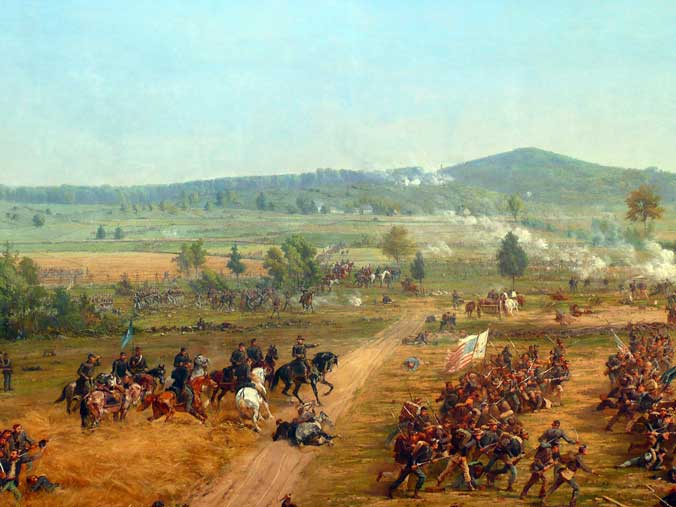 |
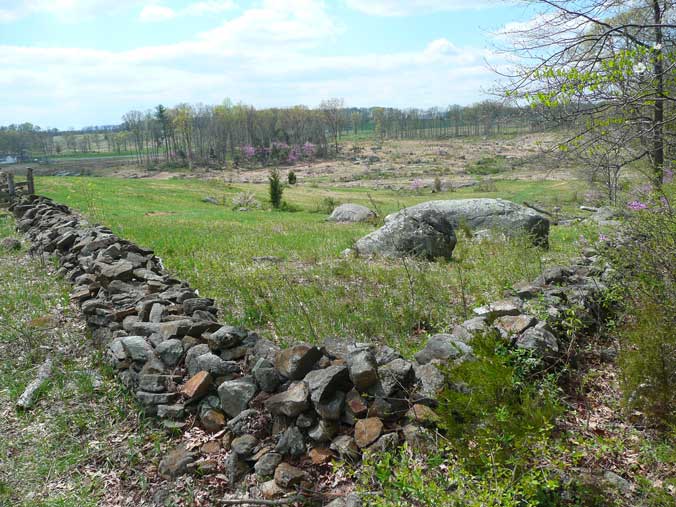 |
Part of the Cyclorama |
Top of Triangle Field |
My friend Don Wiles is also attending the seminar and I met up with him at the visitor center at noon. (Actually, I ran into him during my run, but I did not have time to stop and talk just then.) We had lunch at a place called Gettysburg Eddie's, which I will not recommend. Then we spent the afternoon driving and walking around areas of the battlefield that had been recently renovated, removing expanses of forest that had not been present during the battle. These clearings really make a big difference in interpreting the battle and understanding what the soldiers saw at the time. Many of these are on the southern end of the battlefield, notably Stony Hill and the Slaughter Pen and triangle field near Devil's Den, but they also have done a lot of work around Culp's Hill. Believe it or not, after a number of trips to Gettysburg, I had never climbed to the top of Big Round Top, but we did it today, using an abandoned path that Don described as the "veterans path," which was constructed with a more gentle slope for the elderly veterans who visited. It was in really bad shape, but I saved a few muscles in the ascent. There is not really much to see at the top of Big Round Top because the hill is densely forested, but it was good to say that I went up there.
Dinner was in the tiny town of Oxford, PA, at a family place called Inn 94. Pretty decent.
Saturday
Official Welcome to Seminary by the Superintendent, Gettysburg National Military Park
The new superintendent, Bob Kirby, gave a short anodyne speech about how the seminar fit in with the four official (dare I say "corporate"?) Objectives of the National Park Service this year. He did mention that this is the 13th biennial seminar—I had no idea this had been going on for 26 years! This one was very well attended, with 217 people. Later in the morning, Scott Hartwig revealed that the next conference in 2012 would be relatively modest and has not been planned yet, but they will be doing one in 2013 for the sesquicentennial of the battle. The subject will be "Gettysburg to Appomattox."
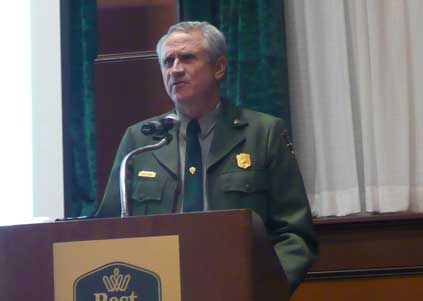 |
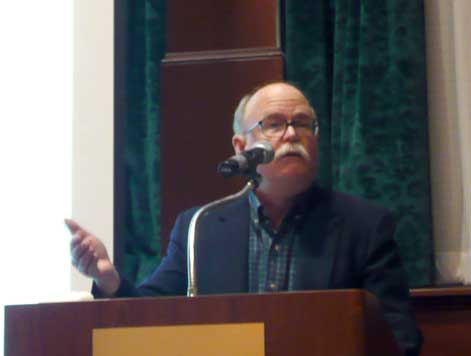 |
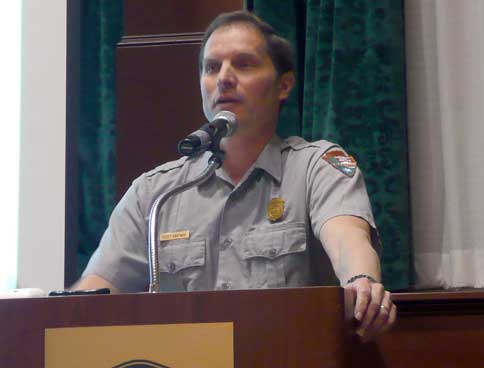 |
Bob Kirby |
Bill Hewitt |
Scott Hartwig |
Lt. Col. William D. Hewitt, USA (Retired) - “Advance and Retreat: Lee regains his stature while Meade displays his shortcomings.”
Bill seems to present first at all the seminars and gives an interesting modern military strategy/planning focus to the 1863 events. He talked about the mechanical aspects of doing retrograde movements and pursuits and then examined how well the two generals did in each. He said that a textbook pursuit consists of two forces, one applying direct pressure and the other one attempting to envelop or cut off the retreating enemy. (He said that some generals recommend applying one third of your force to the former and two thirds to the latter, but other generals think the reverse. He cited Rommel and Patton as two who disagreed on the subject.) He presented what he would have recommended as the ideal strategy for Meade, using Slocum for direct pressure and Sedgwick for the envelopment, emphasizing that the latter would have had to move out very quickly. Unfortunately, Meade decided to wait to see whether Lee would make a defensive stand in the South Mountain passes, a delay that Bill criticized because he thought that piece of intelligence was irrelevant—if the enveloping force had reached Hagerstown quickly, regardless of what Lee did, the game might have been over.
D. Scott Hartwig, Supervisory Historian, GNMP - “The Gettysburg Campaign & Battle: An Eclectic Review”
Scott's title was not very indicative of the contents of his excellent talk, which focused on two questions: Why did Lee invade Pennsylvania and what were the consequences of the campaign? He gave a little survey of information about Lee's motivation from three sources: popular historians, postbellum accounts by participants, and Lee's own communications during and immediately after the campaign. Scott's talk was rich in detail on what many historians and participants thought, which I will not attempt to repeat here, but he reached the conclusion that two of the commonly expressed reasons for Lee to invade Pennsylvania were not valid. There was no evidence that Lee was trying to influence European recognition of the Confederacy, and the invasion was not primarily a "commissary raid" (to use an expression from Clifford Dowdey) in that Lee actually had no confidence in advance that the Cumberland Valley had sufficient forage for his entire army. Scott concluded that Lee's primary considerations were to move the action away from the Rappahannock River, giving Virginia a break for the summer campaign season, to encourage the strengthening northern peace movement, and to stir up consternation and some damage wherever possible north of the Potomac. An example of the latter was when he instructed Ewell that he could take Harrisburg if it became available, but he did not establish it as an explicit objective of the campaign. There is still a lot of disagreement about whether Lee intended to trigger a decisive battle, particularly because he denied this in his occasional postbellum comments, but Scott concluded that his contemporary communications belie this point of view and that he actually was looking for a fight. He stated that after July 1, Lee could easily have disengaged his army from Gettysburg, but he chose to remain and slug it out.
On the second question about consequences, Scott presented a wide variety of opinions that ranged from Jefferson Davis (the most significant event of the war) to Richard McMurray (no impact on the outcome of the war). Kent Masterson Brown even suggested that by including the retreat in the calculation, the campaign can be considered a Confederate victory. Scott concluded that the campaign had a profound effect on both Robert E. Lee and his army and he cited evidence about the increased desertion rate in the Army of Northern Virginia and offered observations from a Private Stillwell of Georgia who explained in his letters home how discouraged he and his comrades were, despite what the officers were saying.
Chuck Teague, Park Ranger, GNMP - “The U.S. Provost Marshal at Gettysburg"
Chuck gave a lively presentation about the history of the Provost Marshal's role in warfare and how many challenges Marsena Patrick had to face in managing all the aspects of his job—controlling civilians, sutlers, camp followers, the press, looters, stragglers, deserters, spies, traitors, and people attempting to steal or misuse government property. It is unfortunate that Chuck did not focus more on the Gettysburg campaign, such as how and where the prisoners were processed. He also had an enormous number of slides and toward the last 10 minutes of his one-hour presentation they were flipping by like the opening credits to "The Big Bang Theory" TV sitcom.
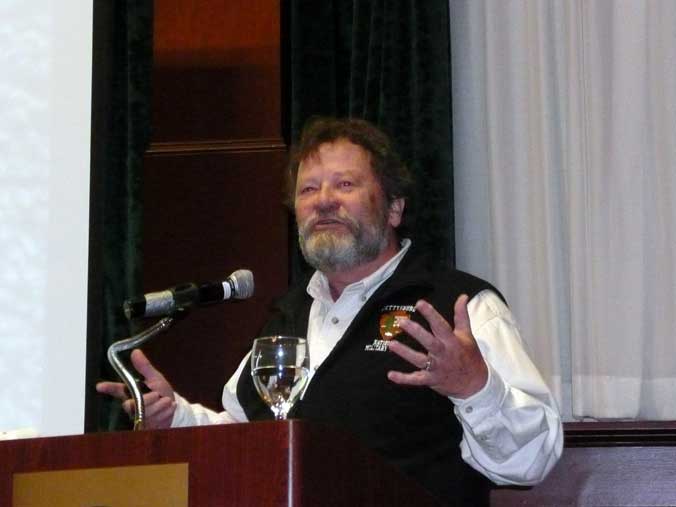 |
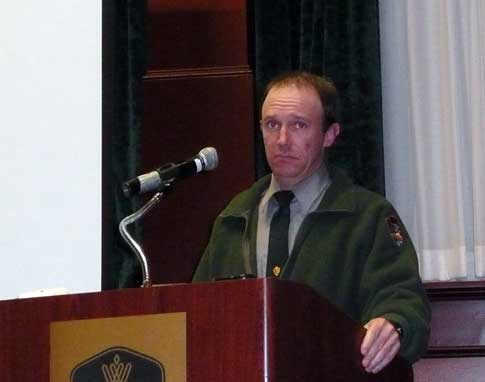 |
Chuck Teague |
Matt Atkinson |
Matt Atkinson, Park Ranger, GNMP - “Camp Letterman: “80 Acres for 121 Days”
I had not encountered Matt previously because he has been spending a number of years at Vicksburg before returning to Gettysburg, but he gave an interesting presentation about Camp Letterman, the enormous Union field hospital that had to deal with 21,000 wounded soldiers after the battle (both Union and Confederate). Only the most severely wounded ended up there for very long because about 15,000 men were shipped out within two weeks of the battle. Even with that smaller number, it was a tremendous load because of the 650 surgeons in the Army of the Potomac, Jonathan Letterman sent all but 106 along with the army in pursuit of Lee, assuming that a large battle would result. The camp was set up in nine rows of tents and each row had 400 tents, each of which had 12 beds. Quite an operation, and not one I would have chosen to visit if I had a time machine. Some of the tales of that Matt told about people waiting 10 days or so to get amputations were pretty gruesome.
Afternoon battlefield tours
There were five tours from which to choose. The ones I did not choose were:
- Phillip Lechak, LBG: A Blue and Gray Sea of Misery. (Bus Tour)
- Ed Guy, LBG: “Some who were left, some who were left behind” (Bus Tour)
- Wayne Motts, LBG & Ben Neeley: Seminary Ridge in Peace and War (Walking Tour)
- John Heiser, Park Ranger/Historian, GNMP: The George Rose Farm: the Battle and its Aftermath (Walking Tour)
My tour was Garry Adelman and Timothy Smith: Images of the Aftermath: the Rose Farm and Devil's Den (Walking Tour). These guys are two of my favorites, offering lots of insights about the battles and the photographic record, served up with a lot of enthusiasm and good humor. I was surprised to hear that of the thousands of photographs from the American Civil War, only 98 are known to include images of dead (human) bodies. This tour took us on an expedition to see the locations in which 37 of them were photographed. We started at the George Rose Farm, which I had never visited before this. We had to climb over a big fence to reach the field. Tim called this relatively small field the bloodiest parcel of land of the bloodiest day of the overall bloodiest battle of the war. We identified a number of photographs that were pinpointed by the location of distinctive rock formations. The famous Alexander Gardner series called the "Harvest of Death," five photos of Federal soldiers that are thought to be located on the Rose Farm, have never been location-confirmed because there are no rocks or other permanent fixtures that can be used to home in on them. But there are plenty of others, almost all Confederate. We took a close look at one the guys referred to as "Mr. Eaton," which is usually described as a soldier disemboweled by artillery fire, but it's more likely that hungry hogs were involved after the death. In working on a video presentation about Civil War photography, Garry and Tim determined that Gardner had staged the photographs by adding a bayonet to the soldier's rifle, but one that was not an appropriate fit for that model of rifle. (To be more exact, the flippant nickname applied to a dummy that was used in creating the video, not the original soldier in the photograph.)
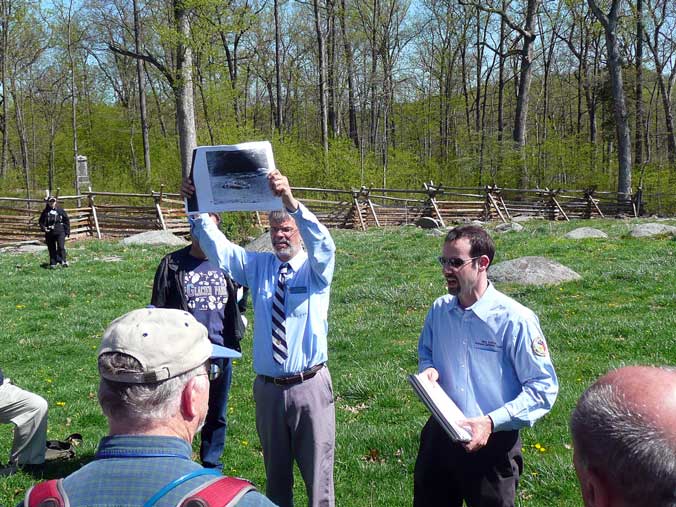 |
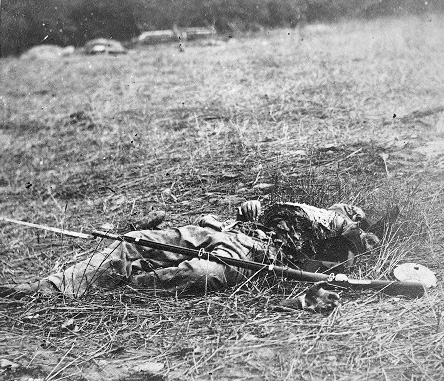 |
Tim and Garry at the Rose Farm |
Model for "Mr. Eaton" |
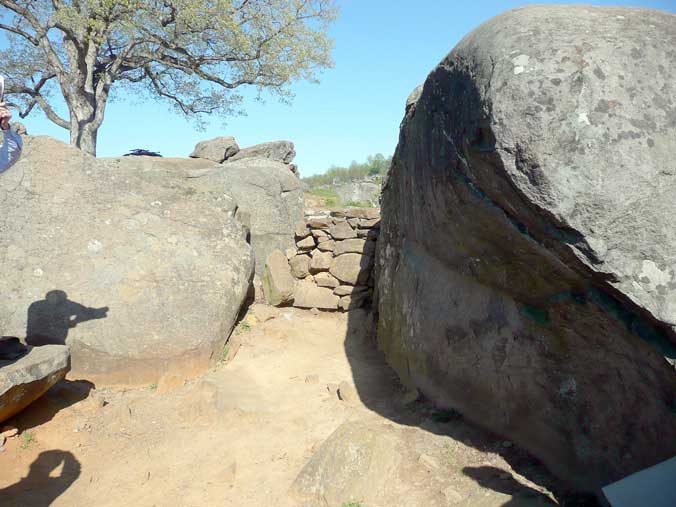 |
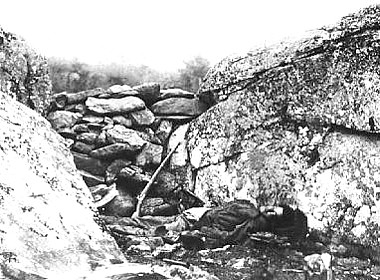 |
Scene of the second Sharpshooter photo |
The second Sharpshooter photo itself |
We walked on the roadbed of the abandoned trolley line, which is now fully visible after all the tree clearing that has been performed, up to the triangular field. There is a legend that it is impossible to photograph inside the "haunted" field, but Tim says that is the reason there are more photographs of that area than any other in Devil's Den. Garry told a story about a local television crew that removed the batteries from their camera when they walked into the field, telling their audience that their cameras suddenly stopped working. We examined the two locations for the very famous Confederate sharpshooter photograph. Apparently Gartner's crew took for photographs at one large rock and then dragged the body uphill to a site between two large boulders and a hastily constructed rock wall connecting them. They have rather strong criticism of Tom Desjardins's book These Honored Dead, in which he suggests the two photographs are not of the same soldier. I was just about ready to say, "Hey, would you guys mind if I lie down in the position and you can take my photograph?" when Garry coincidentally referred to "freaks" who come out and do that sort of thing. The guys also pointed out a small pile of funeral ashes ("cremains") that had recently been dropped there, and they indicated that those were freaks too. (I will have to ensure that my wife does not talk to these two guys after my death. I had not considered the location of the Confederate sharpshooter as an appropriate place, but the battlefield in general...)
We went to the rock where the famous sketch artist, Alfred Waud, posed for a photograph and explored the Slaughter Pen, identifying a number of photographs by distinctive rocks. It was interesting to note that there is an area near the small wooden bridge in which there is a lot of erosion around the banks of the creek and the guys indicated that the Park Service program of large-scale forest removal might be having some unforeseen effects. The 2.5 hour walking tour with Garry and Tim was excellent, accompanied by outstanding weather, and I had a really great time.
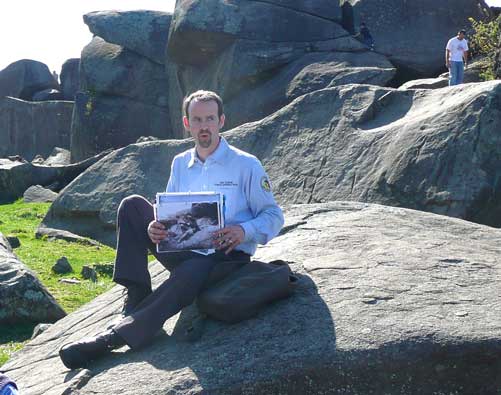 |
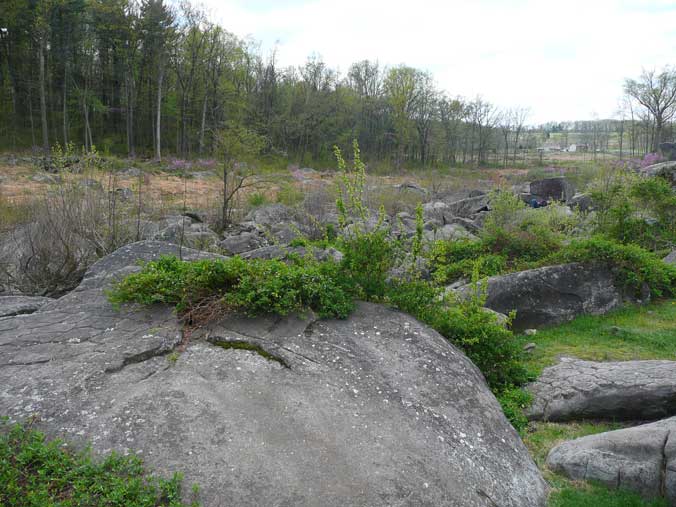 |
Garry channeling Alfred Waud |
Slaughter Pen |
Evening at the Visitor Center
At the new visitor center, we enjoyed a social reception with nice small sandwiches and got to spend some more time in the bookstore, where attendees received a 15% discount. Then we split up into two groups to see one of two presentations and then swapped to see the other. First was "An Evening with the Cyclorama Painting” with Sue Boardman. Sue did an excellent job on a presentation about the history of the cyclorama and how it was restored. I did not know that the image on the canvas was intended to be displayed in a hyperbolic format. Rather than mounting the canvas on a flat surface, it is suspended between two rings and the weight on the lower ring stretches the canvas in a way that makes it take a hyperbolic shape—a slight bulge in the middle. We went into the cyclorama chamber and she pointed out a number of details of the painting, but the highlight of the session was when we went "behind the scenes" to see the canvas and some of the diorama (the 3-D details at the base of the painting) up close.
Sue told the group that she thought this cyclorama was more authentic than the Atlanta version I had just seen a couple of weeks ago. I talked to her about this individually and she thought there were two deficiencies to the Atlanta presentation: first, the artist would not have been happy with some of the excessive diorama figures in Atlanta, preferring that they be minimized so that they merely disguise the bottom of the screen; second, the revolving bleachers format in Atlanta does not allow you to see the entire panorama at one time. As to the second point, I found that it was very difficult to see the entire Gettysburg Cyclorama at once because you are always dodging the torsos of all the other visitors crowding into the room, so the unrestricted view in Atlanta was preferable to me.
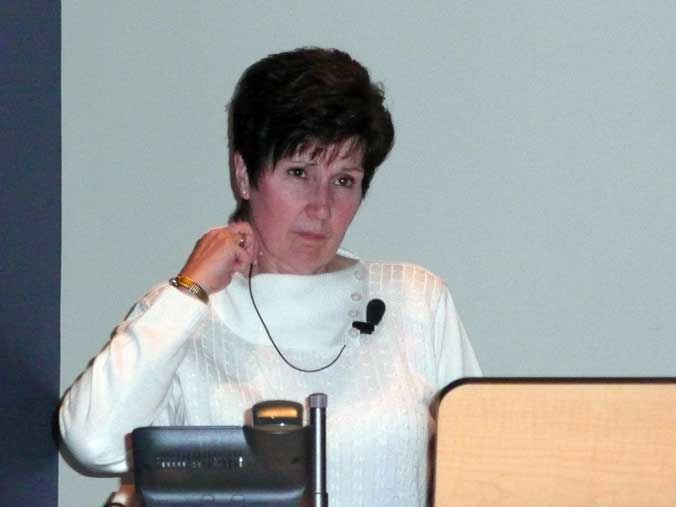 |
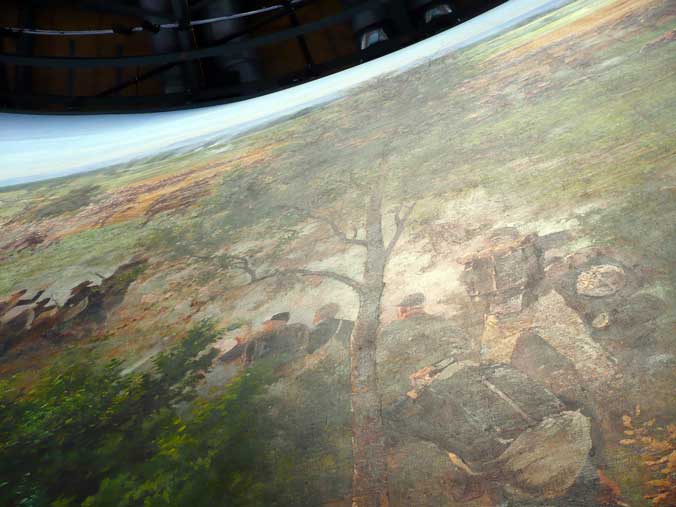 |
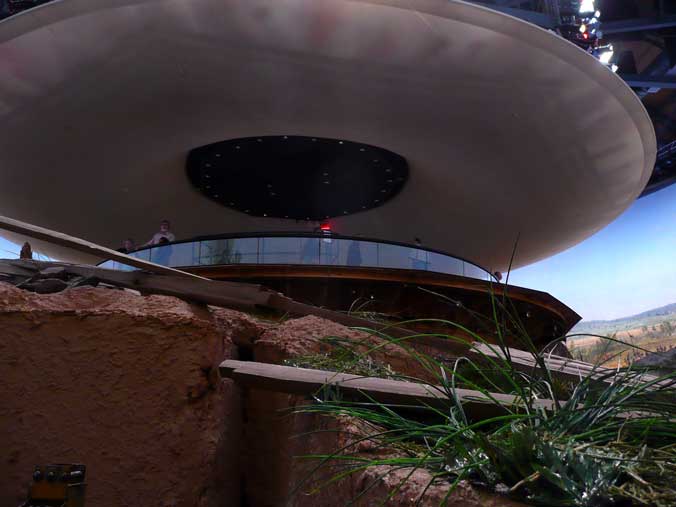 |
Sue Boardman |
Cyclorama canvas—slight hyperbolic bulge |
Viewing gallery "behind the scenes" |
The other presentation was “Our Hearts Were Touched With Fire”, a Living History Program put on by four of the park rangers, including Matt Atkinson and his wife. They portrayed three civilians (one of them Almira Hancock) and one Mississippi veteran gathering in Gettysburg after the war, expounding on the need for battlefield preservation. I half expected Jim Lighthizer to come bounding out at the end asking for money.
Sunday
Bert Barnett, Park Ranger, GNMP - “A Past so Fraught With Sorrow”, Post Battle Experience of the Gettysburg Wounded
Bert normally speaks on artillery topics, so this was a departure for him, although some of the wounded he described were hit by artillery shells. He selected a few of the wounded and went into some details about the nature of their injuries, their recoveries, and their lives after the battle. I took note of two in particular. George Warner of the 20th Connecticut lost both of his arms, but he survived until 1923, and fathered six children. John P. Chase, who won the Medal of Honor at Chancellorsville, lost an eye and an arm and suffered 48 wounds from a single artillery shell at Gettysburg. He became a cyclorama "delineator" and a temperance lecturer. He also was a developer of Florida real estate and attempted to promote a retirement home called Veterans City in Gulfport. He fathered seven children and died in 1914. One comment from Bert that I thought stood out was that the Gettysburg Address consisted of "polished platitudes." When Lincoln gave it, there were only 60 wounded left at Camp Letterman.
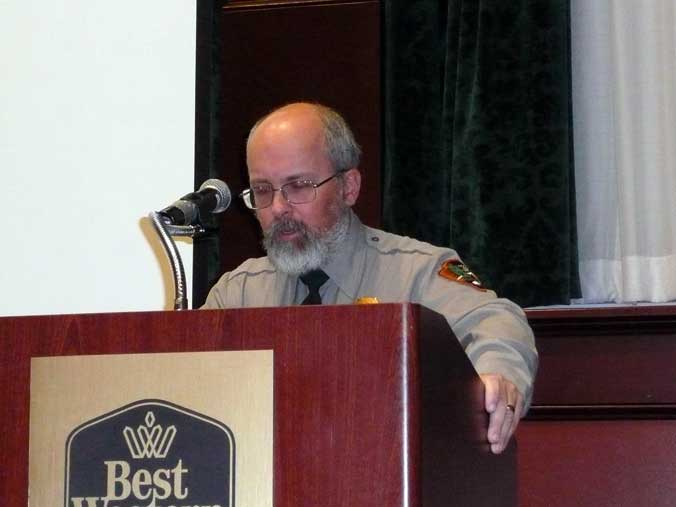 |
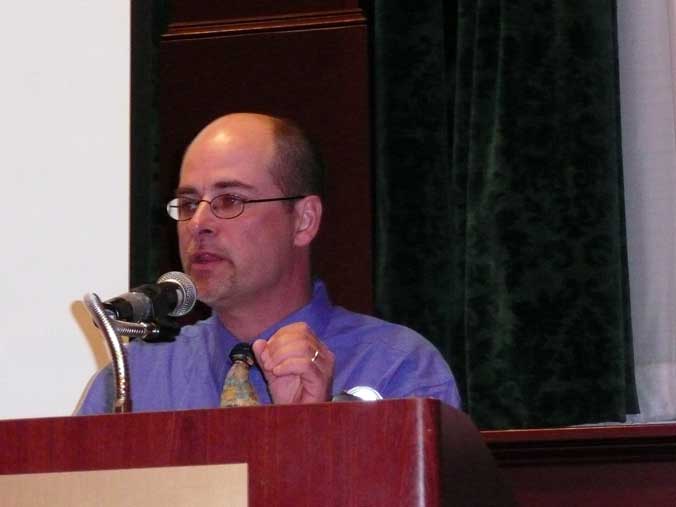 |
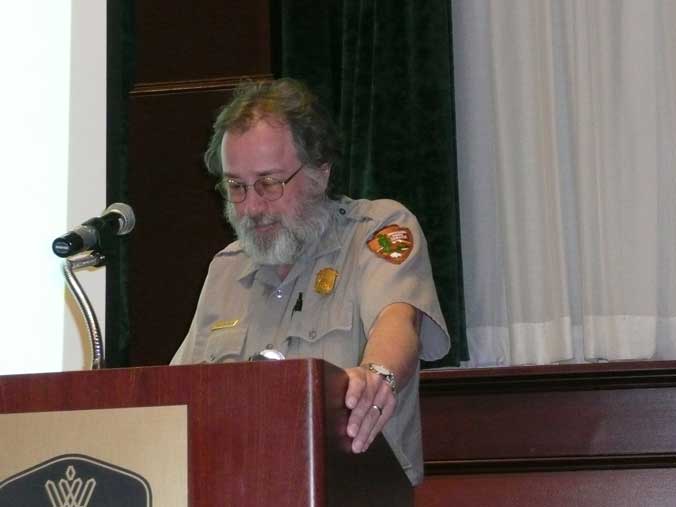 |
Bert Barnett |
Eric Campbell |
Karlton Smith |
Eric Campbell, Park Ranger, Cedar Creek & Belle Grove NHP - “I Have Seen So Much Death and Suffering...That I Am Perfectly Sick of the Times.” Letters from the Battle of Gettysburg and Its Aftermath.
I have been on an excellent battlefield walk with Eric, so I was a bit disappointed in this presentation, which was a rapidfire selection of somewhat randomly selected quotations from soldiers at the battle, dealing with their mental state and some gruesome battle details. There must've been 150 of them and I did not really detect much of an effort to provide a theme or derive an overall conclusion to the presentation. One interesting point was that a number of the Confederates somehow thought that Meade retreated first from the battlefield. Some of the Confederate soldiers used the term "turning point," which is usually only applied in retrospect, so that shows some unique insight.
Karlton Smith, Park Ranger, GNMP - "Such a night is seldom experienced." Lt. General James Longstreet on the retreat from Gettysburg.
Karlton get a presentation that was heavy on photographs of the retreat. I'm not sure I got much benefit out of pictures of modern road junctions. I also did not sense much of a theme and why he selected Longstreet as the focus, other than to narrow down the topic. One interesting tidbit I did not know is that Lee considered halting the retreat near Blackhorse Tavern. The rain was making the movement very difficult and he thought about stopping there to invite Meade to attack him, but Longstreet helped him reconsider and they continued moving west.
Wrapping up
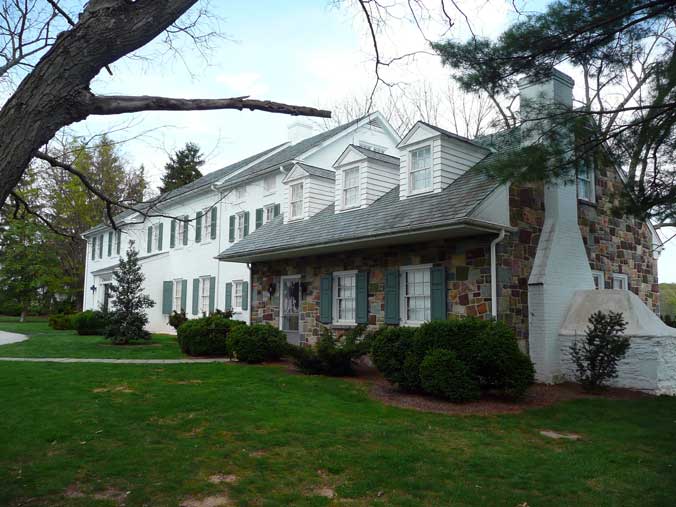 |
Eisenhower farm house |
At the end of the seminar, Don and I went to the Pub on the square for a hamburger and considered how to spend the rest of Sunday afternoon. I suggested a visit I had never made on multiple occasions in Gettysburg—the Eisenhower Farm Historic Site. I found this to be moderately interesting. We took the shuttle bus from the visitor center. A Park volunteer met us at the bus and gave us an overview of the history of the property. Ike and Mamie acquired it just before he became commander of NATO. He had been assigned to Gettysburg in 1918 to run an armored training camp, Camp Colt, which essentially took over the field of Pickett's Charge. A ranger showed us through the house, which was delightfully 50s-retro. I enjoyed looking through his large library, but I saw very few Civil War books. There was the Bruce Catton Centennial trilogy, but only volumes 1 and 3. Perhaps he had other books in rooms we did not visit. We also got to walk around the farm and visit some of the cows. It is a really beautiful location with a panoramic view of South Mountain.
I returned home Sunday night from Dulles. It was a great trip to Gettysburg, one that had been too long in coming. I don't really remember why I was not able to attend the seminar about July 3 two years ago, but I wish I had been there. I have another visit planned in September for the Association of Licensed Battlefield Guides seminar.
In the interest of providing compact files on the web, I split these travelogues into multiple pages. Continue with Part 2. Go to Part 3. Go to Part 4. Go to Part 5.